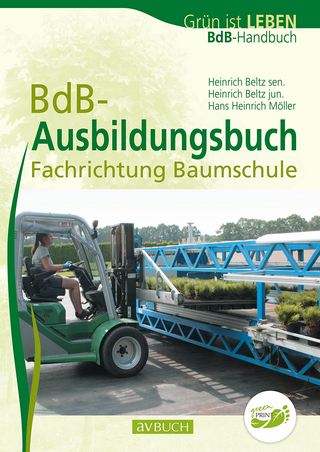
The Berry Grower
New Society Publishers (Verlag)
978-0-86571-965-1 (ISBN)
- Titel z.Zt. nicht lieferbar
- Versandkostenfrei innerhalb Deutschlands
- Auch auf Rechnung
- Verfügbarkeit in der Filiale vor Ort prüfen
- Artikel merken
Dig into the fruits of your labor! Profitable, innovative organic fruit farming strategies and skills for modern growers of any scale
AN INNOVATIVE GUIDE for growing and marketing organic small fruits and berries, The Berry Grower offers intelligent strategies and solutions for successful small-scale, non-chemical fruit production in the 21st century. Coverage includes:
History, innovations, and 21st century challenges in modern fruit farming
Creating your own market farming reality
Farm planning for efficiency and profitability
Factoring in climate change, drought, and extreme weather
Soil fertility, efficient weed management, and organic pest control
Modern tools of the trade for efficiency
Harvesting, fruit handling, and packing
Fruit profiles including raspberries, blackberries, strawberries, currants, gooseberries, figs, tomatoes, and more, including new cultivars
Innovative marketing methods and thinking beyond fresh fruit with multi-product strategies to maximize profit
Learn from other experts through interviews with successful growers and marketers from diverse areas around the USA.
From the market garden and small farm to the homestead and backyard, The Berry Grower is the essential guide for both new and aspiring organic small fruit growers and seasoned farmers looking to produce high- quality organic fruits and products for local markets and self-sufficiency.
Blake Cothron is an organic farmer, nurseryman, writer, musician, and speaker, with over 20 years' experience in organic agriculture, botany, horticulture, and growing food. He is the co-owner and co-operator of Peaceful Heritage Nursery, a 4-acre USDA Certified Organic research farm, orchard, and edible plant nursery. Author of Pawpaws: The Complete Growing and Marketing Guide, he has also written for Permaculture Design magazine and various online publications. Blake has an educational blog and YouTube channel devoted to fruit growing, and he is an educator with the Organic Association of Kentucky. He divides his time between farming, research, writing, beekeeping, gardening, travel, yoga, meditation, and being a husband and father in beautiful Kentucky.
Preface
PART 1: THE BASICS
1. Why Small Scale, Small Fruits?
— Why small fruit growing? — How and where to start? — Understanding current climate challenges — Small fruits to the rescue — Why micro fruit farming? — Limitations of small fruit growing — Maximize profits by being the workforce— The future of small and micro farming
2. 21st Century Strategic Planning
— Planning it out — How to research — Evaluating agricultural profit forecasts — Understanding your bioregion and regional climate — Choosing cultivars — How many plants?— Pollination
3. Sourcing Plants and Navigating the 21st Century Nursery Scene
— Sourcing plants and plant material — Sources to avoid — Organic or conventional? — Navigating the nursery scene — Quality nurseries
4. Creating Beds
— Creating space for small fruits to thrive — Mechanical tillage — No-till options — Spacing — Managing walkways — Stale bedding — Planting the beds — Planting in rows— Cover cropping
5. Managing Soil Fertility Organically
— Practical considerations — Soluble and insoluble organic fertilizers — Animal-product based fertilizers — Vegan plant-based fertilizers — Mineral fertilizers — Compost and manures — Consider the impacts — Applying organic fertilizers— Unlocking latent soil fertility
6. Planting Successfully
— Handling and inspecting nursery stock — Storing dormant plants — Effectively handling cuttings — Pre-planting preparations — Proper planting practices— Post-planting care
7. Organic Weed Management
— Using permanent grass cover — Mulch — Landscape fabric — Flame weeding — Plant Guilds
8. Tools of the Trade
9. Maintenance, Protection, and Organic Pest Control
— Integrated Pest Management (IPM) — Insect management — Common animal pests — Frost protection
PART 2: GETTING TO KNOW YOUR FRUIT ALLIES
10. Blackberries
— Types of modern blackberries — Site considerations — Cultivation — Fertilizing — Mulch and irrigation — Pests/Diseases/Challenges — Harvest — Marketing— Recommended cultivars
11. Blueberries
— Species — Cultivation — Planting — Weed control — Irrigation — Pruning — Pests/Diseases/Challenges — Cultivars (by region)— Harvesting and marketing
12. Raspberries
— Species — Cultivation — Irrigation — Pruning — Thinning — Trellising — Mulch— Propagation — Pests/Diseases/Challenges — Marketing— Cultivars
13. Strawberries
— Cultivation — Growing Methods — Thinning — Planting — Irrigation — Harvesting — Marketing — Pests/Diseases/Challenges— Cultivars
14. Juneberries
— Cultivation — Best species by region — Irrigation — Pests/Diseases/Challenges — Marketing— Cultivars
15. Muscadine Grapes
— Cultivation — Irrigation — Pollination — Pests and diseases — Marketing— Cultivars
16. Mulberries
— Species of mulberries — Cultivation — Irrigation — Potential for commercial production — Harvesting — Pests/Diseases/Challenges — Marketing— The future of mulberries— Recommended cultivars
17. Gooseberries
— Cultivation — Irrigation — Pests and diseases — Harvesting — Marketing— Recommended cultivars
18. Currants
— Cultivation — Irrigation — Pests and diseases — Harvesting — Marketing— Cultivars
19. Figs
— Cultivation — Cold region (USDA zones 5–7) — Understanding high tunnel fig growing — Warm region (USDA zones 8–10) — Harvesting
— Marketing — Pests and diseases— Cultivars
20. Tomatoes
— Cultivation — Pests and diseases — Irrigation — Marketing— Cultivars
21. Other Small Fruits Worthy of Consideration ...Or Not
— Aronia (Aronia melanocarpa) — Autumn Olive (Elaeagnus umbellata) and Goumi (Elaeagnus multiflora) — Bush and Nanking Cherries
— Kiwiberry (Actinidia arguta) — Cactus Fruits — Cornelian Cherry (Cornus mas) — Hardy Passionfruit (Passiflora incarnata) — Elderberry (Sambucus canadensis) — Feijoa (Acca sellowiana) — Goji (Lycium barbarum) — Hybrid Cane Berries — Rosehips — Seaberry/sea buckthorn(Hippophae rhamnoides) — Munson Grapes — Che (Maclura tricuspidata) — Honeyberry (Lonicera caerulea)
PART 3: HARVESTING, MARKETING, AND THE FUTURE
22. Harvesting and Post-Harvesting
— Harvest efficiency— Protecting, storing, and chilling
23. Market Planning and Strategies
— Direct marketing methods
24. The Future of Small Fruit Growing
— Climate change and fruit growing— Rescuing the genetic pool by selecting your own local cultivars
25. Interviews with Successful Small Fruit Market Growers
26. Conclusion
Appendix: Jivamritam
Notes
Resources
Index
About the Author
About New Society Publishers
| Erscheinungsdatum | 13.10.2021 |
|---|---|
| Zusatzinfo | 8 Illustrations, color; 50 Illustrations, black and white |
| Verlagsort | Gabriola Island |
| Sprache | englisch |
| Maße | 191 x 225 mm |
| Gewicht | 508 g |
| Themenwelt | Sachbuch/Ratgeber ► Natur / Technik ► Garten |
| Naturwissenschaften ► Biologie ► Botanik | |
| Wirtschaft ► Betriebswirtschaft / Management ► Planung / Organisation | |
| Weitere Fachgebiete ► Land- / Forstwirtschaft / Fischerei | |
| ISBN-10 | 0-86571-965-9 / 0865719659 |
| ISBN-13 | 978-0-86571-965-1 / 9780865719651 |
| Zustand | Neuware |
| Informationen gemäß Produktsicherheitsverordnung (GPSR) | |
| Haben Sie eine Frage zum Produkt? |
aus dem Bereich


